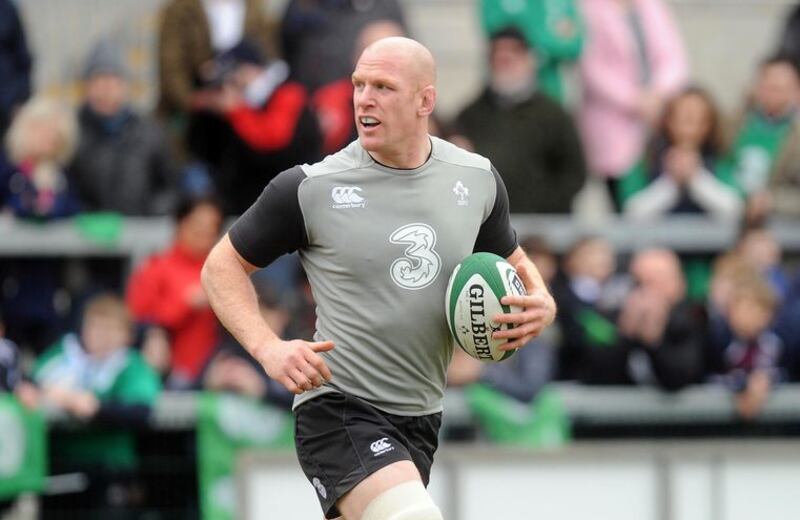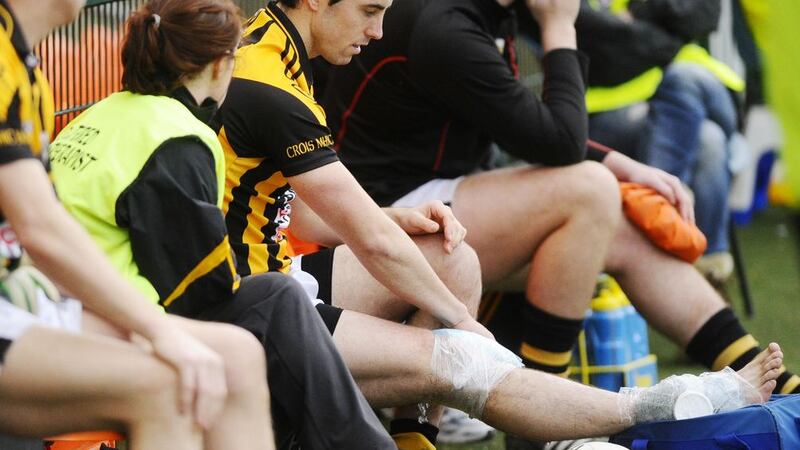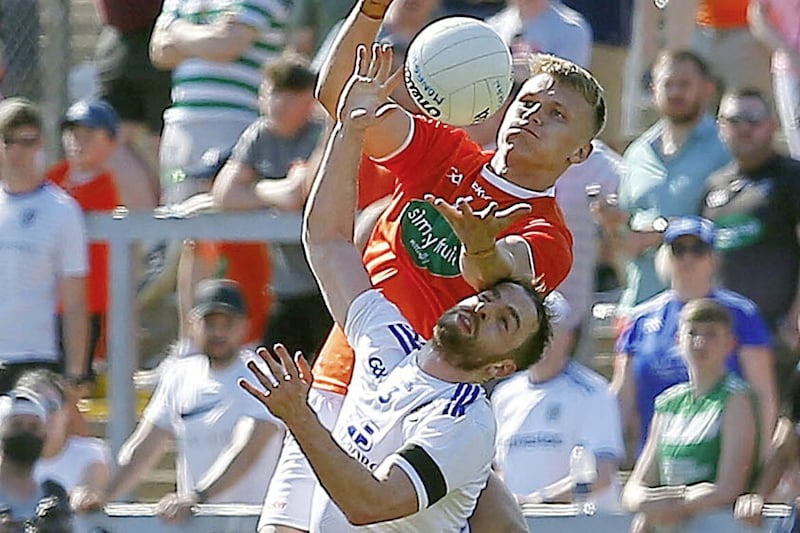SPEAK to any physio or doctor involved with GAA teams across the country and I have no doubt they will all say now is the most common time of the year for players to seek treatment for chronic injuries.
Why is this? Simple really - quite often, a player will sustain an injury during the season but make the conscious decision to play through the pain barrier, even though the symptoms quite often get progressively worse the longer the player continues to participate.
Continuing to play with medical problems such as groin pain, tendon problems or ankle instability is never encouraged by medical teams but, when a player is driven by a vision of succeeding, it is almost impossible to talk them into a rest period. They are generally happy to take the chance they will survive the season before addressing the inevitable.
This mindset has, no doubt, been a factor in hip surgeries in the GAA rising 392 per cent from 2007 to 2014. Too many players simply rest and return to pre-season training in January to find the same injury has not resolved. Many of these problems need active rehab in the off-season to resolve them before the new season starts.
This course of action is particularly prevalent in younger players, who are often asked to play too much, with commitments to club, college and county often overlapping. They are never really afforded the chance of a proper break, as they have no periodisation to their training schedule. No-one is really responsible for the overall control of the player as they are generally seamlessly moving from one squad to the next.
I hurt my Achilles tendon during a training session in the week leading up to Armagh’s Championship clash with Down in May 2011. Rest was the best course of action recommended by the medical team, but I didn’t have time to take four to six weeks out and slowly build myself up to playing pain free.
I managed the injury through regular treatment and sitting out the odd training session for over two years through club and county seasons until, eventually, I tore my Achilles in October 2013.
It was the enforced lay-off that my body needed to recover properly but, because I let the injury fester for so long, even after my six-month break and intense rehab program, I still have to carefully monitor my training load to avoid a reoccurrence. These setbacks have taught me to train smarter and start listening to my body. This took me years to realise.
I am sure the majority of young, enthusiastic players aspiring to be successful will continue to push themselves until they break down, rather than maximising the knowledge and advice they have around them in the clubs, colleges and county squads from professional medical and strength and conditioning teams.
Players should use the off-season properly to their advantage - take a break for a couple of weeks, but then review your previous season. Is there any part of your physical conditioning that you need to work on? Do you want to lose weight, get fitter, put on more muscle mass?
This is the time to seek proper advice and put a plan into action. Players who do have a break - often club players - take a complete break from all training. They return to pre-season training in January and then break down with injury as they can’t cope with the spike in training load in January.
Coaches need to be aware of this. The best advice is to keep yourself ticking over in the off-season with some cardio and weights and then you won’t be at high risk of injury when pre-season training starts.
I have now decided to use my extended winter break to plan work on weaknesses between now and pre-season to hopefully leave me in the best condition possible to go through 2017 playing to my potential.
We have so much knowledge now available to us to help us, not only develop as players, but for later in life to be sure we aren’t crippled with old injuries. My eight-week program covering rehab, gym and cardio sessions to experiment with, cost me less than £100. It could prove to be the best money I’ve invested in my own personal preparation for next season.

There is a myth within the GAA that we are asking players to train at too high a level. I was fortunate to have had the opportunity to listen to Paul O’Connell speak at a sportsman’s dinner last week.
During O’Connell’s question and answer session, he mentioned how, as a kid in primary school, he trained more hours per week as a teenage club swimmer than he ever did as a professional rugby player.
I also bumped into a local triathlete last Saturday. That morning, he had just completed a 150km cycle and 20-mile run in preparation for an upcoming Iron Man event. There is no easy way to get fit, regardless of what sport you are passionate about.
The fact he is willing to put himself through that torture, alone and at considerable personal expense, just made me realise how fortunate I am to be involved in a team sport like the GAA, where I have a host of professionals on hand to help me make the most of myself on the football field.








